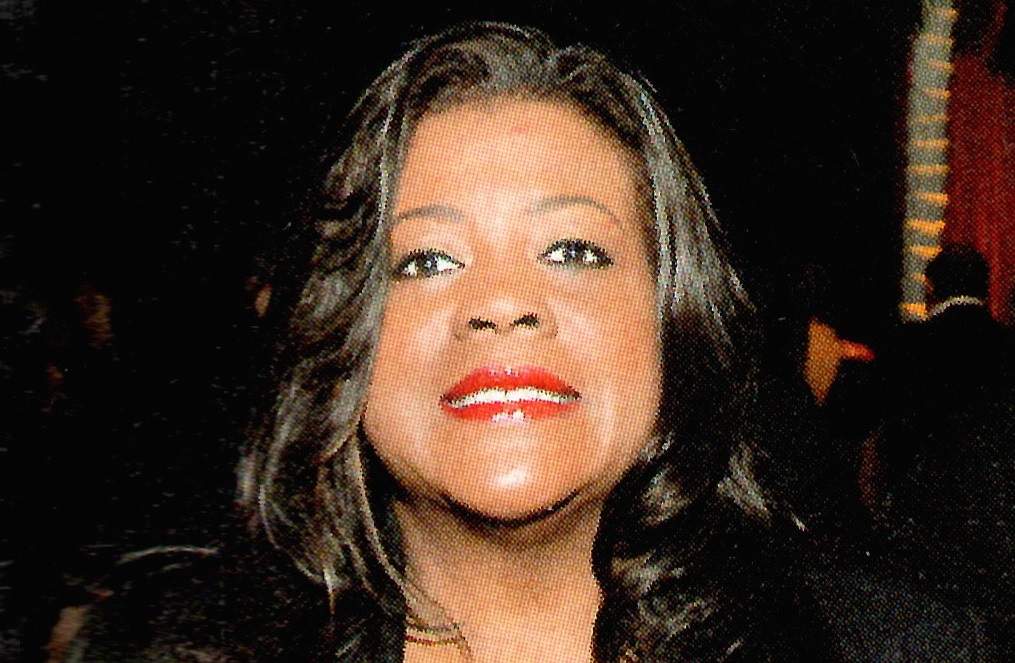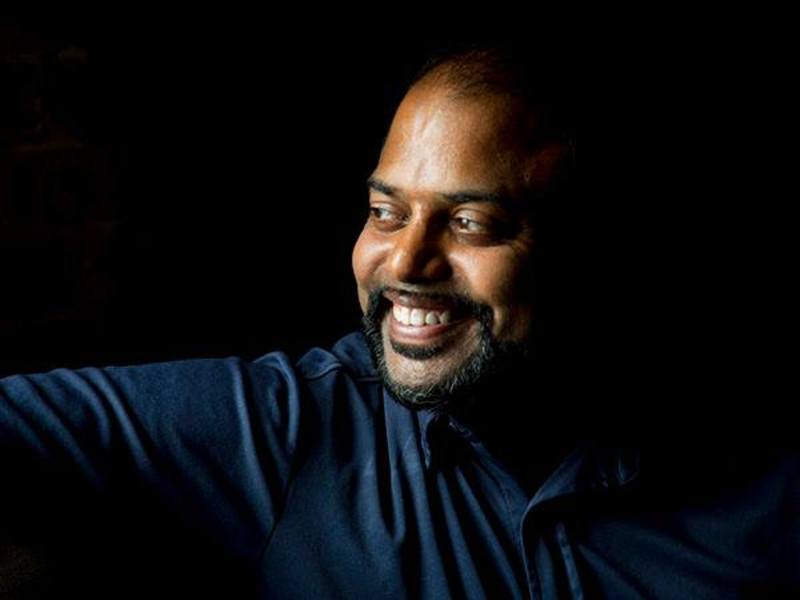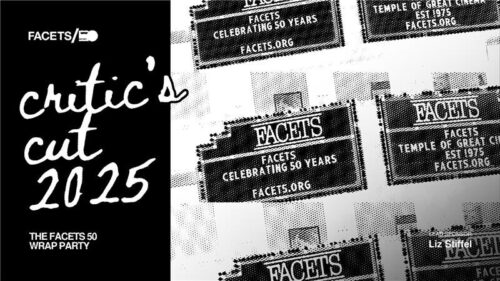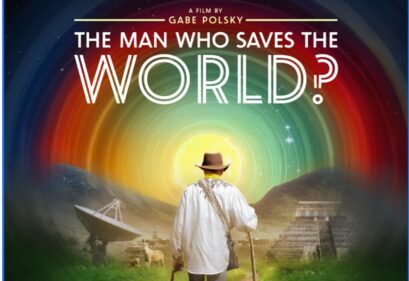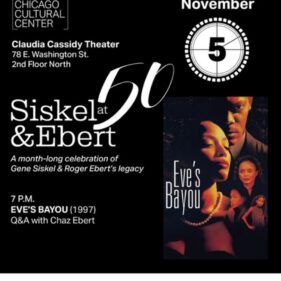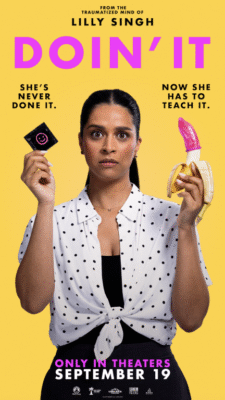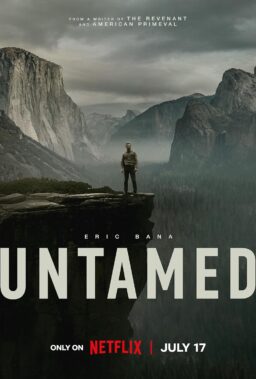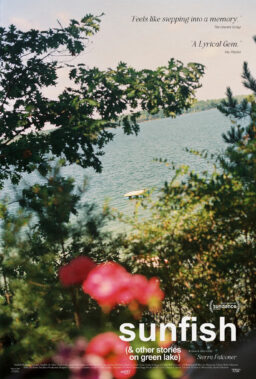The following three-part tribute features a series of articles reposted in memory of filmmaker Prashant Bhargava, who passed away May 16th. His 2011 film, “Patang,” screened at Ebertfest in 2012.
We begin with Roger Ebert‘s interview with Prashant, published October 5th, 2011.
PART I: STRANGER IN A WONDROUS LAND

I visited India only once, for less than two weeks, but I left a part of my heart there. I can’t say I know it well, but I know how it made me feel, and it seemed impossibly exotic and absolutely comfortable at the same time: I was curiously at home in a strange land.
At an event in my hotel, I met a police chief’s wife, who invited me to her home for dinner. Just like that. The families seemed to function in the ways of families I knew. The fact that so many people in this far-away land spoke English made it more accessible to me. I loved the way so much of the talk circled around philosophy. I developed a particular love of the exuberant music, colors, scents and tastes. It occurred to me that no women can fail to look well-dressed in a sari.
But these are all superficial tourist truisms. I have learned more in my reading, but so could you. It’s in the movies where I find sensual and instinctive insights. I like Bollywood, and the classicism of Ray, but there’s one area of Indian films I’ve missed, or remain ignorant of: The low-budget indie scene. Sometimes, all over the world, such films are freed of the lockstep of plot and have a better feeling for the thing itself.
A new film named “Patang” in this year’s Chicago Film Festival opened a new world for me. It plunges head-first into a family based in Ahmedabad, where India’s largest annual kite festival is celebrated. It reflects the way Indians live in each other’s pockets (to borrow the the British expression). Homes and businesses, temples and roadways, are all crowded close together, neighbors know one another, and it’s all held together by a network of the most baffling and chaotic traffic in the world.

This film is joyous, but more than that: It’s lovely in its construction. The director, Prashant Bhargava, born and raised in Chicago, knows what his basic story line is, but reveals it subtly. The story in outline would be simple enough for a made-for-TV movie. There is nothing simple about “Patang.” The bare bones of the story: An affluent uncle from Delhi named Jayesh (Mukund Shukla) pays a much-delayed visit back home to his family in Ahmedabad, bringing along his daughter Priya (Sugandha Garg), who hasn’t seen these relatives in years. He meets his mother (Seema Biswas), his grandmother Ba (Pannaben Soni), and his nephew–the son of his brother, who died of a heart attack. The nephew, Chakku (Nawazuddin Siddiqui) resents the way this distant man descends grandly on the small town relatives and feels he has the right to make suggestions and changes. There are many more details, but that’s all I choose to reveal.
The story line becomes fully clear only towards the end. In form “Patang” looks almost like a cinema verite documentary of this family, surrounded by the city and the kite festival. Although it was years in the making, many key shots were obtained during the festival itself, and we see the skies over the city filled with thousands of dancing, dueling kites, as every single rooftop is occupied by people. Below in the streets, bands, fireworks and food vendors create a tumult. There is a little romantic subplot, involving the daughter from Delhi and Bobby (Aakash Maherya), who begin a flirtation on the rooftop and continue it during a motorbike ride.

The family house itself is a character, and there are a few extended shots of its graceful, playful architecture and happy colors. Many interiors involve a photograph of the dead brother, whose soul seems to inhabit it. Meals are prepared and shared on a table in the street. The food looks delicious; fingers are often used. People are teased to perform songs. Gossip and chatter run wild. No attempt is made to lay all this out logically; indeed, we only gradually come to know who the characters are. It’s clear enough, but not underlined and pounded home.
We meet a young boy named Hamid (Hamid Shaikh), who is delegated by a kitemaker to deliver a parcel of kites to this family home on the big day. His mission ends badly. A search goes up for Hamid. Meanwhile, on a bridge, Priya and Bobby begin a flirtation. Both are good looking. Her eyes dance with merriness. They’ve been together a few hours. In a lesser film, this would be a love story with a happy ending. “But Bobby,” she says, “we hardly know each other. Do you expect me to leave behind thousands of friends in Delhi?”

He does. Now watch carefully. Their flirtatious conversation is filmed in close ups and closer-ups. The effect is intimate and sensual. In one shot only, cigarette smoke coils from her mouth. We never otherwise see her smoking This establishes in a moment that she is more worldly than the boy. She kisses him, but that will be that: This is only a few-days visit.
Back at home, the frenzy of the kite-flying takes over. We learn that the kite strings are coated with powdered glass, and the idea is to cut another kite out of the sky and rule the clouds. This is never explained in so many words. We have to observe for ourselves that the kite-fliers protect their fingertips with tape. Such facts are embedded in the film, to be discovered in context. So is the mystery of the nephew’s resentment, which is explained obliquely by indirect dialogue. We are immersed in the life and sort it out for ourselves. The effect is curiously like being invited into this home and learning while we stay.

Prashant Bhargava was born and raised on the South Side of Chicago, went to grade school and the Kenwood Academy. How did his background produce such a lovely and successful indie film in India? From my point of view, the story begins about 25 years ago, when his father, Vijay Bhargava, started taking my film class at the University of Chicago’s downtown extension division. Vijay was smart, affable, good company. He always saved a seat for me in the back row. During the complete silent features of Buster Keaton, we worked our way through oatmeal raisin cookies and peach Snapple. He loved movies, knew a lot about them, and when I was going to the Calcutta Film Festival he set me up with his cousin, who showed me all over town, including the Victoria Memorial, an architectural wedding cake that he regarded with a certain pleasure, considering Victoria had once appointed herself Empress of India.
Last week I was signing my book at Barnes & Noble at Webster Place. Since I can’t speak, I like to shake everyone’s hand before a signing. There in the line was Vijay! I hadn’t seen him since before my surgery in 2006. He introduced me to his son, Prashant, who had made a film that played at the Berlin and Tribeca festivals, and others. They gave me a DVD. I brought it home and was delighted by it.
Prashant told me his dad spent over 25 years working in the administration of Michael Reese Hospital. “After 20 years of attending your class and supporting my career as a director and designer, he has taken up acting!” he told me. “He has taken over 25 classes at Chicago’s Act One Studios. He is a gardener as well, and recently completed a master gardening course at UIC.”

As for his mother, Ranjana Bhargava, who catered the meals of the cast and crew of his film: “For over 35 years, Ranjana has spearheaded efforts to serve the needs of women, immigrants and other marginalized communities in Chicago. She has led and managed numerous non-profit organizations, including Apna Ghar, a domestic violence shelter serving predominantly Asian women and families. She now teaches vegetarian Indian cooking on the south side of Chicago in our home.”
Prashant attended Cornell, majored in computing, moved into film titles, music videos and live action commercials. “The seeds for the movie ‘Patang’ were based on the memories of my uncles dueling kites,” he said. “In India kite flying transcends boundaries. Rich or poor, Hindu or Muslim, young or old — together they look towards the sky with wonder, thoughts and doubts forgotten. Kite flying is meditation in its simplest form.
“In 2005, I visited Ahmedabad to experience their annual kite festival, the largest in India. When I first witnessed the entire city on their rooftops, staring up at the sky, their kites dueling ferociously, dancing without inhibition, I knew I had to make this film in Ahmedabad.”
And so he did. “Inspired by the spiritual energy of the festival,” he told me, “I returned the next three years, slowly immersing myself in the ways of the old city. I became acquainted with its unwritten codes of conduct, its rhythms and secrets. I would sit on a street corner for hours at a stretch and just observe. Over time, I connected with shopkeepers and street kids, gangsters and grandmothers. This process formed the foundation for my characters, story and my approach to shooting the film.
“I found myself discovering stories within Ahmedabad’s old city that intrigued me. Fractured relationships, property disputes, the meaning of home and the spirit of celebration were recurring themes that surfaced. The film’s joyful message and its cinematic magic developed organically. My desire was for the sense of poetry and aesthetics to be less of an imposed perspective and more of a view that emerged from the pride of the people and place.”
And that’s what happens. His film took three years of research, was seven years in the making, had 90% non-actors, improvised its takes based on the script. And it flies as free and colorfully as a kite.
Click here to read Roger’s 4-star review of “Patang,” published June 13th, 2012.
Our second section includes Matt Fagerholm’s interview with Prashant and his close collaborator Craig Marsden about their film, “Radhe Radhe: Rites of Holi,” published at Indie Outlook November 3rd, 2014.
PART II: JUMPING INTO MADNESS

Two men, each armed with a DSLR camera and two assistants, dove headfirst into the crowded streets, frenzied rituals and unbridled passion of Holi, the ancient Hindu religious festival held over eight days in the Spring throughout India. These adventurous filmmakers were Prashant Bhargava—director of 2011’s superb “Patang,” which staged a family drama amidst India’s largest kite festival—and Craig Marsden, an accomplished cinematographer who served as an assistant film editor on Harmony Korine’s 1997 directorial debut, “Gummo.” Their goal was to capture footage for a short film that would eventually become the visually dazzling 35-minute opus, “Radhe Radhe: Rites of Holi,” which is scheduled to screen with a live orchestra at various venues around the country over the next two months.
Indie Outlook spoke with Bhargava and Marsden about the project’s fascinating evolution, the mind-boggling obstacles they faced and their collaboration with composer Vijay Iyer. Full disclosure: I was a creative consultant on the project and assisted Bhargava during a portion of the extensive editing process.
How did this project come about?
Prashant Bhargava (PB): It was originally commissioned by Carolina Performing Arts as part of a series commemorating the 100th anniversary of Igor Stravinsky’s composition, “The Rite of Spring.” There were a number of fantastic artists who were also a part of the series, such as Yo-Yo Ma, the Martha Graham Dance Company and Bill T. Jones. The group had contacted Vijay Iyer, who’s a MacArthur genius and a Grammy-nominated musician, and he reached out to me. His inclination was to explore a Hindu or Indian Rite of Spring.
He’s always been exposed to Stravinsky’s work and was not as keen on exploring it in the traditional way. He felt that it had been done many times before and it was important to take a different approach. So he had the idea of focusing on Holi, which is a joyous celebration normally characterized by people throwing color at one another. He suggested that we could shoot the celebrations in Queens but I wanted to explore where the festival had originated. The festival was going to happen in three weeks, so it was quite a rush. I knew Craig through some other work and I needed someone who would be able to just roll with it while maintaining a strong aesthetic.
Craig Marsden (CM): I have shot some documentary work, including a couple of films that were on PBS, “Las Marthas” and “We Still Live Here: Âs Nutayuneân” by Anne Makepeace. That film was about indigenous identity issues, so there was some crossover there with this project. I’ve also shot footage of a dance company, so I’ve had experience capturing music and performance. I was totally fascinated by rituals and improvisation and culture and the way these things blend together, but I was not prepared for what we were getting into. I had never been to India before.
One thing that Prashant and I had in common was the ability to work on our own. Prashant has the sensibility to go out there and be very self-reliant and super-alert. When we got to [the town of] Mathura, there was so much going on and way too many things to look at. As a defensive reaction, you want to just start filming everything, but Prashant said, “Sit here for an hour and just watch and observe.” That was the advice Prashant had given his actors in “Patang,” and it really helped me contend with the onrush of stimulation.
What was your starting point, in terms of preparation?
PB: The first task was to get to know The Rite of Spring. That literally began with reading the Wikipedia entry and then going from there and starting to do more research. I didn’t understand the piece at first. It sounded very eerie, and it has a lot of dissonance. It wasn’t something that was warm and inviting, but it grew on me and I fell in love with it.
CM: You became obsessed with it and got deep into the structure of it.
PB: We were well aware of that structure when we reached Mathura. Craig and I had listened to the composition’s twelve movements several times and tried to imagine what that climactic twelfth movement would be. My first thought was to do an exploration of the Radha Krishna myth, since I didn’t see a connection between the color and laughter of Holi and the darker undertones and stronger narrative arc of The Rite of Spring. When we arrived in India, I found the level of fanaticism and feverish devotion initially unsettling, and I’m saying that from a perspective of believing myself. I was also apprehensive because I am accustomed to having a much longer period of research prior to filming. With “Patang,” I had three years. I wanted to make something that people from the area would feel very proud of.
What we discovered while editing was that this is not a documentary. This is not meant to be a piece that is describing what happens each day during the festival. It is motivated by the objectives and arc of The Rite of Spring. In section one, the city is waking up. You can take any shot and incorporate it as long as it creates the sensation of waking up. Section two is the act of preparation. That may be someone in a sweet shop rolling out some dough or drying themselves off with a towel. We found the objectives within each movement, and in our first cut, the objectives were those of the devotees. This past April, we did a second shoot where we had an actress, Anna George, portray the goddess, Radha.
CM: You always knew what bit you needed and were very particular in what you were looking for. It was not a random collection, there really was a solid structure behind it. I got to come in for the editing and it was amazing because you knew the material intensely well. Your approach was not associative, it required very rigorous thinking about what was needed at any particular point.
PB: It was beautiful to discover the arc of the Stravinsky piece in Mathura. [The Lord] Krishna was born in that region and his initial flirtation with Radha occurred there. There are several interpretations, but consistent in all is that Radha was a married woman. In my interpretation, Radha is twelve years older and introduces Krishna to his own sexuality. I examined the arc within each movement of The Rite of Spring and found parallels within the footage. For example, the procession of devotees into the temple occurs during movement six, Procession of the Wise Elder. It was also important that Craig and I recognized what our strengths and differences were in how we shot. We would split up.
CM: You were crazier. [laughs] At various points, we would get separated and lose contact with one another.

PB: I enjoyed being completely irreverent and jumping into madness. It’s an event heavily covered by photographers, so the people there are pretty open. It was crucial that I wasn’t approaching it from the perspective of someone trying to carve away or break down the institution of religion or find the sensationalism. I was coming from a place of belief and a genuine sense of love. At the same time, I was obnoxious. If there was a dancing pit, which is very similar to a mosh pit in the type of violence that occurs within it, I would go right in the middle. Now that’s stupid.
Were there injuries?
PB: We got pretty beat up. We both had days where we couldn’t go out. I got a cut on my foot that got inflamed. The cameras were small and had rain covers on them, and I would just challenge people to throw everything at me, and they would. I engaged in the same cathartic dancing and wildness of the people I was filming. That would not have happened if I didn’t have the “Patang” experience. The beauty of the environment is preserved and the magic that’s occurring is not effected by your presence. One of the most interesting things we encountered was the bonfire, which is an odd ritual for Holi. It took place in a relatively small square with low-hanging telephone and electrical wires.
At one point, I got surrounded by policemen asking what I was doing there. I just started explaining everything. That was one thing I learned from “Patang”: don’t just tell them the whole truth, tell them so much truth that they don’t want to hear any more. One of the cops asked, “What do you think the Americans will think of this?” I said, “Well, half of them will think that you’re pretty crazy. The other half are going to look at these rituals that you are engaging in and see themselves in a different light. You will open them up to entirely new possibilities. This will be a gift to them.” Then the cops asked, “Where do you want to shoot?” and allowed me to get up close to the fire.
CM: Nobody could be down where he was! The flames were so hot that everyone reared back when they flared up. I don’t know how he managed to film it from such a close distance. Prashant was always in the center of the ring. I was always scrubbing the lenses for days afterward. [laughs] Early on in the shoot, my glasses got snatched by a monkey outside of the temple, so for two days, I couldn’t see except through the viewfinder of the camera.
PB: Monkeys do that all the time. They take your glasses and demand biscuits. Then they’ll throw them back and often get broken in the end.

Did you ever get scared?
PB: Only one time. That’s when I shot the footage of the red powder and the small boy looked into the camera. I sat down in the first row alongside the other devotees, and they didn’t like that. They didn’t mind it, but I think they were surprised that a photographer or someone with a camera who’s not from their village would sit there, since this is a ritual between two villages. The liquid in the temple was an inch and a half deep and you have to go in barefoot. The crowds and the amount of pushing was very scary. I swung around my camera at one point to avoid shooting the deities, which is not allowed, and then someone hit me really, really hard. The powder made me unable to see anything and I didn’t know what I was filming. That’s when the sense of claustrophobia set in. I ended up getting so soaked in the red liquid that three months after the shoot, I had red toenails.
Since you cut the footage to The Rite of Spring, when did Vijay Iyer’s music come into play?
PB: I would like to do another project with Vijay where we are both engaged in each other’s craft throughout. This particular project was not like that. We basically had overlap in the times that we exchanged our work. I showed him footage and got his input, but I didn’t know how to work with his recordings, which were not with the full orchestra. They were digital explorations of rhythm and instrumentation and I wasn’t able to imagine how amazing they would eventually become. I gave Vijay my cut of the film and he watched it without listening to the Stravinsky music. Then he composed his original score. The inherent structure and rhythm of The Rite of Spring was preserved while at the same time, there was enough flexibility for Vijay to embrace it and have a great deal of freedom to explore in his own way. He did a marvelous job.
The film is split into two halves, Adoration and Transcendence. What inspired you to add the footage of Radha after the initial premiere in March 2013?
CM: The title, “Radhe Radhe,” is a Hindu greeting that ties into the recurring theme of summoning Radha. There was a sense that she had to be personified and humanized to a degree. The principle beat is that she’s waiting for the arrival of her lover. Then there’s people at the unfolding celebration who are summoning her, so there’s this sense of a parallel between the crowd and her. One seems to bring about the other. With Radha, Prashant and I were really trying to explore, in a very micro way, a shift from one thought to the next.

PB: The first section is the call/response of the devotees. As they wake, Radha wakes. As they call, she’s awakened and gets ready. As they rush toward her, she stands and watches them from above. As they grow closer, her smile encourages them to move up further. The second half is about Radha’s relationship with Krishna, and it’s unclear whether Krishna is physically present or if he’s a memory. The Radha Krishna myth is usually about their pursuit of one another and they are rarely seen together. In our film, you see Radha in her private bedroom, waiting for him to come. Then there’s some doubt that he’s not coming and a deeper frustration that he may be with someone else. Then she’s swept away by feelings of sweetness as she remembers their encounters. As the fire is burning, the memories reach their climax.
It was really fun to shoot the scenes of the goddess, and my depiction of her was partly influenced by “Under the Skin.” Craig was co-directing the scenes with me, and it was fun to take that immense leap of faith. It was static, staged, acted footage shot on a completely different stock, nothing like what was in the film. The eleventh and twelfth movements became very confusing. The length of the shots were one or two seconds and the static shots of Radha had to be part of that fabric, so I had to rip apart the piece in order for it to work. At the same time, I was falling in love with Vijay’s music and finding something entirely different within that. It is our hope that the film enables audiences to feel the same ecstasy, primal joy, celebration and cathartic release that we experienced along with the devotees in the process of making it.
The Blu-ray and DVD of “Radhe Radhe: Rites of Holi,” as well as Vijay Ayer’s soundtrack, are also available on Amazon.
PART 3: CANOPY OF COLOR

Far Flung Correspondent Omer M. Mozaffar penned an obituary for Prashant on May 16th.
At RogerEbert.com, we are heartbroken to learn of the sudden death of Prashant Bhargava in New York City. Roger gave his film, “Patang” (2011) four stars, inviting him to present it at Ebertfest. Bhargava was a meticulous artist, a consummate auteur, whose craft affected every detail of his films. His source materials and canvases were the Indian experience, in India as well as in diaspora.
His experience came from extensive work in advertising, working with NBC and PBS. He was a commercial director, with experience promoting HBO’s “The Wire,” “Def Poetry Jam” and “Oz.” He directed Music videos for such major artists as Missy Elliot and Talib Kweli.
While most Indian families lived on Chicago’s North Side, eventually moving out to the North, Northwest, and Western Suburbs, Bhargava’s family established a long time residence on Chicago’s South Shore, living with friendship through all the neighborhood’s changes. In my conversations with him, he was very conscious of social and community activism, inspired by his mother, Ranjana, who has a long history of work in women’s causes in Chicago. Through his father Vijay, a decades-long participant in Roger’s “Film Study with Roger Ebert” at the University of Chicago and consummate student, he developed a love for learning. Prashant earned his education at Cornell and the Actor’s Studio.
He was a true auteur. Some auteurs resist categories and forms, rebelling against them. Some auteurs, push envelopes of structure and content. For Prashant, all the tools, genres, and techniques were options in his pallet, fusing various cultures and styles into a unique piece. In other words, he was not bound by the limitations of the equipment or conventions of the media available to him.
He invested himself thoroughly in each of his films in ways rivaling the masters. He would personally research with the determination of a college academic and prepare for years before shooting. For “Patang,” he took residence in India, in the neighborhoods he would later film.
He would decide on every aspect of the work, including choosing lesser-used aspect ratios and compositions when he deemed appropriate. They have the feel of documentary, following subjects through an event. They are frequently unscripted, following improvised moments and conversation. He manages in each film to construct a narrative that is organic, and yet complex. His casts are usually a mixtures of of non-actors mingling with some of the best of Indian actors. His scores come from a wide variety of artists, and, sometimes from a live orchestra on site.
Thus, his films are hard to categorize as anything short of “art.” It is fitting that his final film was “Radhe Radhe” (2014) mixing Stravinsky’s “The Rite of Spring” with the Indian Spring Holi festival, synthesizing East and West into a way that embodied his own life experiences.
Prashant was such a friendly man, with the deep emotional well of a gifted talent. We would run into each other in Chicago at film events and take a moment to chat. As fellow South Asian South Siders, It always seemed as though we should become better friends, and now it is too late. But, knowing how much love permeated his relationship with his family supporting him through his wonderful creative endeavors, I can say that even though it was so short, his was a good, rich life.
On May 23rd, 2015, “A Patang Picnic for Prashant” was held in memory of the filmmaker at Brooklyn’s Prospect Park, enabling friends to gather and fill the sky with a canopy of color.
Click here to read Far Flung Correspondent Seongyong Cho’s review of “Patang,” published May 27th. Offer your own memories of Prashant at his official memorial page on Facebook.
